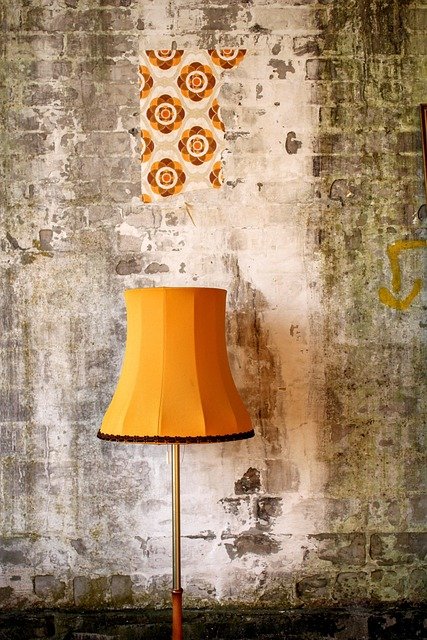Embracing the Grandmillennial Aesthetic: A Fresh Take on Traditional Design
The cozy charm of grandmother's living room meets the sleek sensibilities of the millennial generation. Picture plush floral sofas adorned with artisanal throw pillows, vintage china cabinets displaying curated collections of modern ceramics, and antique oil paintings hanging alongside contemporary abstract art. This is the essence of the Grandmillennial style – a design movement that's breathing new life into traditional decor and captivating a generation of young homeowners.

The roots of this style can be traced back to the early 2010s, when young designers began incorporating vintage pieces into their modern spaces. However, it wasn’t until 2019 that the term “Grandmillennial” was coined by House Beautiful, catapulting the aesthetic into the mainstream. Since then, it has gained momentum, appearing in design magazines, social media, and homes across the globe.
Key Elements of Grandmillennial Decor
At the heart of Grandmillennial style is a love for pattern, color, and texture. This aesthetic embraces elements that were once considered stuffy or outdated, reimagining them for the 21st century. Some key features include:
-
Chintz and floral patterns: Bold, romantic florals are making a comeback, appearing on everything from wallpaper to upholstery.
-
Wicker and rattan: These natural materials add texture and a touch of whimsy to spaces.
-
Needlepoint and embroidery: Handcrafted textiles bring a personal, artisanal touch to the home.
-
Antique and vintage furniture: Pieces with history and character are prized in Grandmillennial interiors.
-
Fine china and crystal: Once reserved for special occasions, these items are now being used and displayed daily.
-
Scalloped and pleated details: These feminine touches add softness and elegance to furniture and decor.
The Psychology Behind the Trend
The rise of Grandmillennial style reflects a deeper shift in societal values and priorities. In an era of fast fashion and disposable goods, millennials are increasingly drawn to items with history, craftsmanship, and lasting value. This aesthetic allows them to create spaces that feel lived-in and personal, rather than staged or sterile.
Moreover, the comfort and nostalgia associated with grandmother’s house provide a sense of security in uncertain times. As millennials face economic challenges and global crises, surrounding themselves with familiar, comforting objects can be a form of self-care and emotional grounding.
Implementing Grandmillennial Style in Modern Homes
While the Grandmillennial aesthetic celebrates traditional elements, it’s not about recreating a time capsule of the past. The key is to balance old and new, creating spaces that feel fresh and personal. Here are some tips for incorporating this style into your home:
-
Mix patterns and textures: Don’t be afraid to combine different florals, stripes, and plaids. The key is to vary the scale of patterns to create visual interest without overwhelming the space.
-
Embrace color: While neutral palettes have dominated in recent years, Grandmillennial style celebrates rich, saturated hues. Consider painting a room in a bold shade or incorporating colorful accessories.
-
Layer your lighting: Combine vintage table lamps with modern ceiling fixtures to create a warm, inviting ambiance.
-
Display collections: Whether it’s vintage teacups or contemporary art prints, curated collections add personality and charm to a space.
-
Invest in quality pieces: Look for well-made furniture and decor items that will stand the test of time, both in terms of durability and style.
The Sustainability Angle
One of the most appealing aspects of Grandmillennial style is its inherent sustainability. By embracing vintage and antique pieces, this aesthetic encourages the reuse and repurposing of existing items, reducing the demand for new production. It also promotes the idea of buying for quality and longevity, rather than following fleeting trends.
Furthermore, the emphasis on handcrafted elements and natural materials aligns with the growing interest in artisanal goods and sustainable production methods. This approach not only reduces environmental impact but also supports small businesses and traditional crafts.
Grandmillennial Style in the Digital Age
While Grandmillennial aesthetic is rooted in traditional design, it has found a significant following on social media platforms. Instagram accounts dedicated to this style have amassed hundreds of thousands of followers, sharing inspiration and tips for achieving the look. This digital presence has helped democratize the style, making it accessible to a wider audience and allowing for a global exchange of ideas.
Moreover, technology is being integrated into Grandmillennial interiors in subtle ways. Smart home devices are disguised within vintage-inspired casings, and modern amenities are hidden behind traditional facades, allowing for the best of both worlds.
The Future of Grandmillennial Style
As with any design trend, the question arises: is Grandmillennial style here to stay? While it’s impossible to predict the future of interior design with certainty, several factors suggest that this aesthetic has staying power:
-
Its emphasis on quality and longevity aligns with growing concerns about sustainability and consumerism.
-
The style’s flexibility allows for personal interpretation and evolution over time.
-
Its emotional resonance provides a sense of comfort and connection that is likely to remain appealing in our fast-paced, digital world.
As the style continues to evolve, we may see it incorporate more diverse cultural influences and adapt to changing lifestyles. Whatever the future holds, the Grandmillennial aesthetic serves as a reminder that good design is timeless, and that there’s always room for a fresh perspective on traditional elements.





